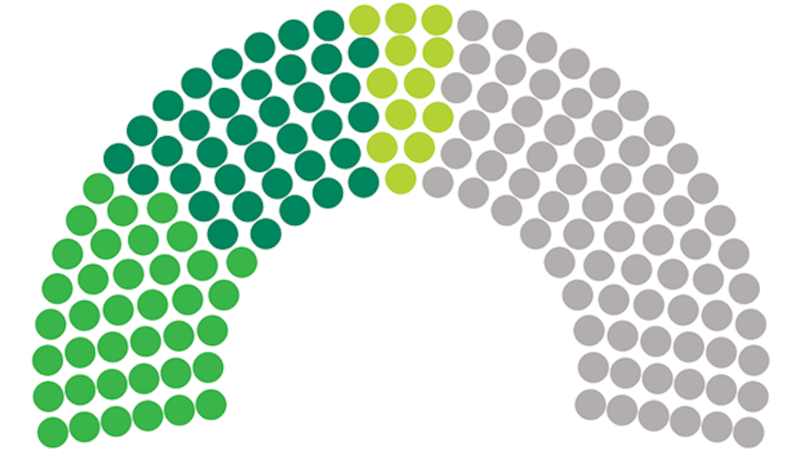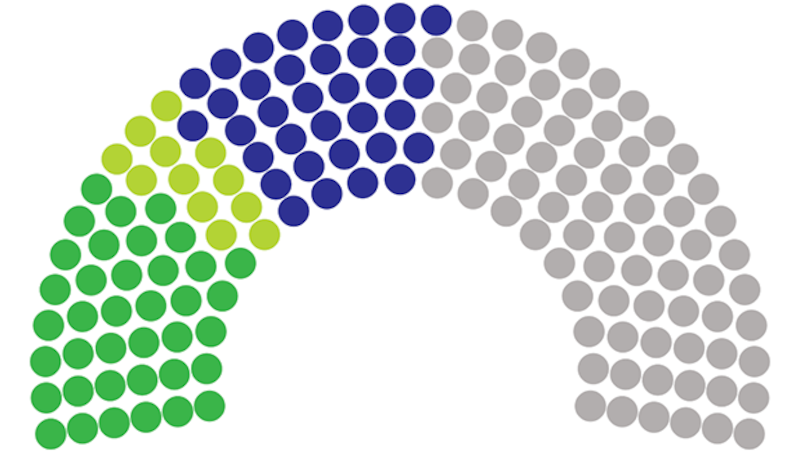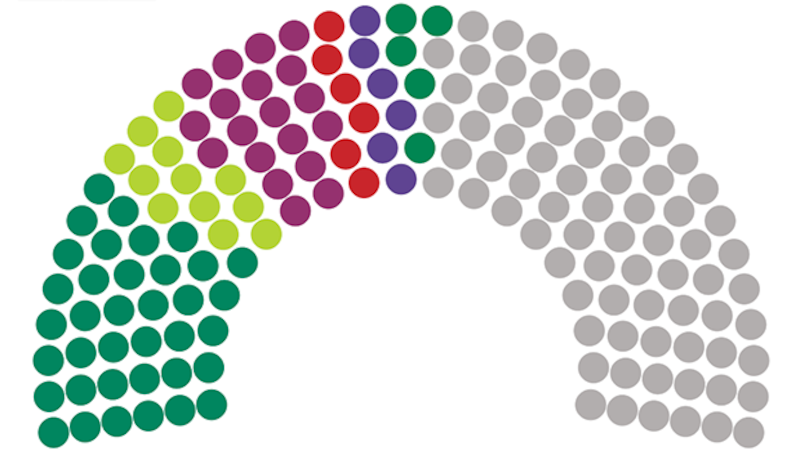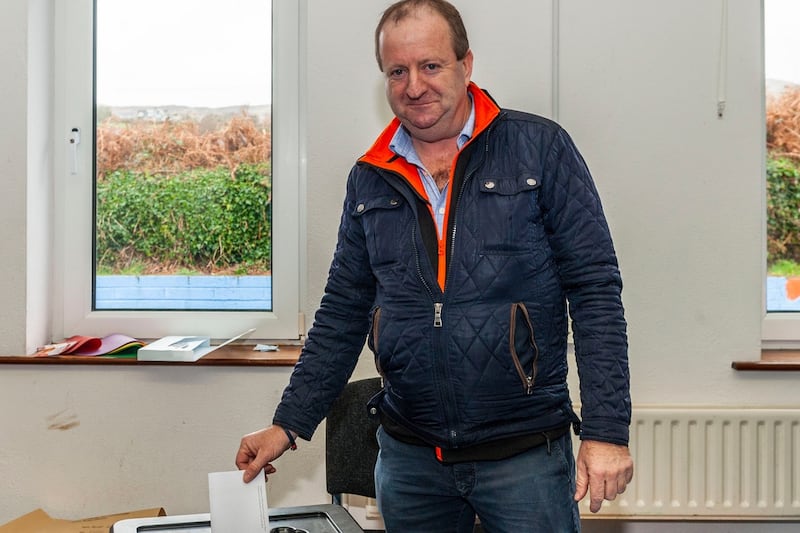Given that there are large policy and personality differences between and within all parties, the process of forming the next government is going to be very difficult. The evidence from past coalitions in Ireland and across Europe is that the fewer numbers in a coalition the better. They also work only if they adhere to written policy objectives. The theory is that these provide stability and ensure effectiveness. Below are the only four plausible options, rated on a five-point scale for stability and effectiveness.
Option one: a coalition of Fianna Fáil, Sinn Féin, and either the Greens, Labour or the Social Democrats – or even all three


Stability rating: 2
Effectiveness rating: 2
Such a coalition, particularly with the Greens, gives a stable majority. Fianna Fáil’s difficulty is the Micheál Martin dilemma. Could he plausibly lead his party into such an arrangement?
It is actually good for him that Fianna Fáil and Sinn Féin together can’t reach a majority. Third-party involvement buffers him from accusations of a sell-out of his pre-election promise not to go into power with Sinn Féin. It might be easier for Fianna Fáil to enter such a coalition with a new leader. Fianna Fáil never envisaged a scenario where it would lose seats in Martin’s third election as leader and this could be used to force him out by the coalitionists in the party. It could also, however, lead to a huge schism in the party.
It is unlikely that either Labour or the Social Democrats on their own would go into government with Fianna Fáil and Sinn Féin. A government of all five parties would, however, have a type of national unity to it and could be sold to the people as a response to the national emergency in housing and health. It could also be seen as honouring the spirit of article 28:4:1 of the Constitution: “The Government shall be responsible to Dáil Éireann.” Such a government would be tortuous to negotiate but could certainly be formed.
It is theoretically possible to replace Fianna Fáil with Fine Gael in this scenario but there is virtually no chance of this happening. This election was a rejection of Fine Gael in government and it is impossible to see Sinn Féin working with it given this outcome. The same goes for the smaller parties. There is also no way that Fine Gael will serve as minor coalition partners to Sinn Féin so we can rule this out.
Option two: Fianna Fáil, Sinn Féin plus a number of former Fianna Fáil gene-pool Independents

Stability rating: 3
Effectiveness rating: 2
This would work on the numbers and could prove relatively stable. Independents might, however, not want to be part of it. Three Independents involved in the outgoing government – Shane Ross, Katherine Zappone and Kevin “Boxer” Moran – all lost their seats. It also removes the buffer of the third party that enables Fianna Fáil to enter coalition with Sinn Féin in the first place with an easier conscience.
Option three: Fine Gael could go back into government with Fianna Fáil and the Greens

Stability rating: 3
Effectiveness rating: 3
This would see Sinn Féin excluded from government, much to the fury of all those who voted for it in the expectation of it finally entering the corridors of power.
This option runs against the mantra of change that dominated the election but it is not only Sinn Féin which has a mandate from the electorate. Having a third party involved again actually helps both Fianna Fáil and Fine Gael.
The problem is that this government would have the support of only 50 per cent of the voters and it would constantly be attacked for having no real mandate out of the change election.
Nevertheless, it could last for some considerable time and if it fixed the health and housing issues then it could actually be popular. That is, of course, extremely hypothetical.
The danger is that it lets Sinn Féin grow exponentially in opposition to the point where it becomes Ireland’s most popular party and wins large numbers of seats in the next election if the quality-of-life issues that dominated this election campaign are not fixed.
It would also be very difficult for Fianna Fáil and Fine Gael to differentiate themselves from each other while in government. Still, this is a very live option.
Option four: A Sinn Féin-led left-wing alliance

Stability rating: 1
Effectiveness rating: 1
There will be 87 non-Fianna Fáil and non-Fine Gael deputies in the new Dáil, so the numbers are there for Mary Lou McDonald to become taoiseach. It would, however, be an act of Herculean proportions if she pulled it off.
A Sinn Féin-led left-wing alliance consisting of the Greens, Labour, the Social Democrats, Solidarity/People Before Profit and a rural grouping as suggested by Peadar Tóibín could probably get to 75.
Some Independents might be tempted to throw in their lot with such a government, which would certainly transform government in the State. It is difficult, however, to see former Fianna Fáil and Fine Gael gene-pool Independents supporting it.
Beyond that the obstacles to this government are enormous. The differences between rural Independents and Solidarity/People Before Profit are vast before one even considers whether the hard left actually wants to be in power at all lest it spoil its ideological purity. If the hard left rules itself out, such a government would need even more Independents. It is practically impossible to see this option working.
Despite the party returning with a barely believable 38 seats it seems clear that any new government will have to include Fianna Fáil. Its leader and other senior members know this. Thus they need to act accordingly and that means calling either McDonald or Leo Varadkar.
Gary Murphy is professor of politics at Dublin City University












